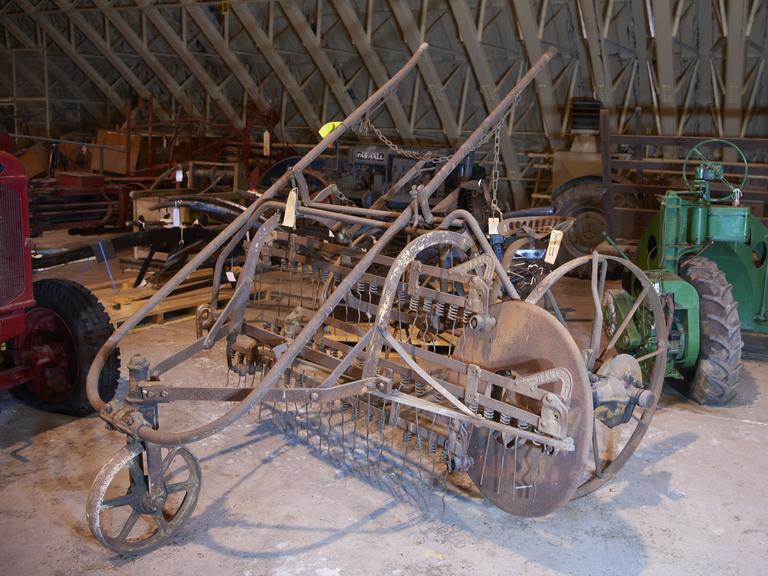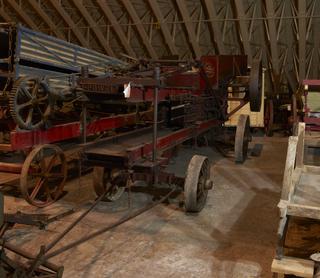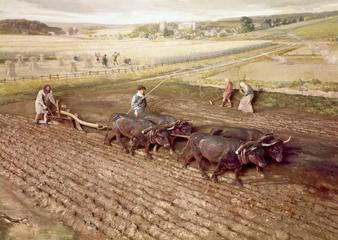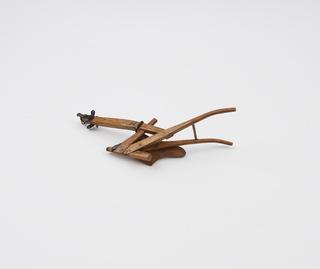

Swath turner No.8734, by Bamford & Sons, Uttoxeter, 1917-1958
This swath turner is significant as a product built by a notable agricultural engineering company, and as an example of mechanisation in farming practice.
Bamford and Sons were prominent makers of agricultural equipment. Until the First World War they primarily made harvesting implements and barn machinery. Subsequently, they built small internal combustion engines too. The firm was long-lasting, being founded in 1845 and surviving into the late 1960s. Joseph Bamford was great grandson of the company’s founders; he was fired from the company in 1945, but went on to found gigantic multinational engineering company JCB.
The swath turner speaks to widespread efforts to mechanise agriculture. Swath turning is the process where hay, having been formed using rakes into a swath – a longitudinal pile - is turned over in its entirety to ensure that it dries thoroughly, that remaining in contact with the ground beneath taking longer to dry out. The process was relatively late to mechanise, when labour was cheap and hay could be worked by hand. However, mechanisation accelerated in the early twentieth century as farm labour became scarcer, and mechanisation also allowed the entire hay-making process to be accelerated, reducing the chances of it being affected by adverse weather.
This swath turner has three rakes, each with a set of sprung steel tines mounted beneath. The turner is supported by two wheels at its rear, a pinion gear at the hub of which drives a large wheel to which the rakes are connected by gearing which ensures the tines always point downwards. Compared to earlier turner designs, this ensures a larger ground area is swept, and no hay is left behind once the turner has passed by. The tines on each rake engage with the swath and roll it over through 180 degrees to one side, ensuring that the hay nearest the ground now faces upwards, and that all dries evenly. At the front, a dolly-wheel supports two poles (actually a single piece, pivoted above the dolly-wheel) which would take the traces for a horse – the turner was designed to be horse-drawn. A seat is provided above the rear axle so a farm hand could drive the horse and monitor progress, using a lever to keep the rakes clear of large obstacles if need be.
Details
- Category:
- Agricultural Engineering
- Object Number:
- 1982-246
- Materials:
- cast iron, gunmetal, paint, steel (metal) and wrought iron
- Measurements:
-
overall: 1600 mm x 5280 mm x 2600 mm,
overall (with handles raised): 2150 mm x 2650 mm x 2600 mm,
wheelbase: 1550 mm,
- type:
- swath turner
- credit:
- Corinium Museum




